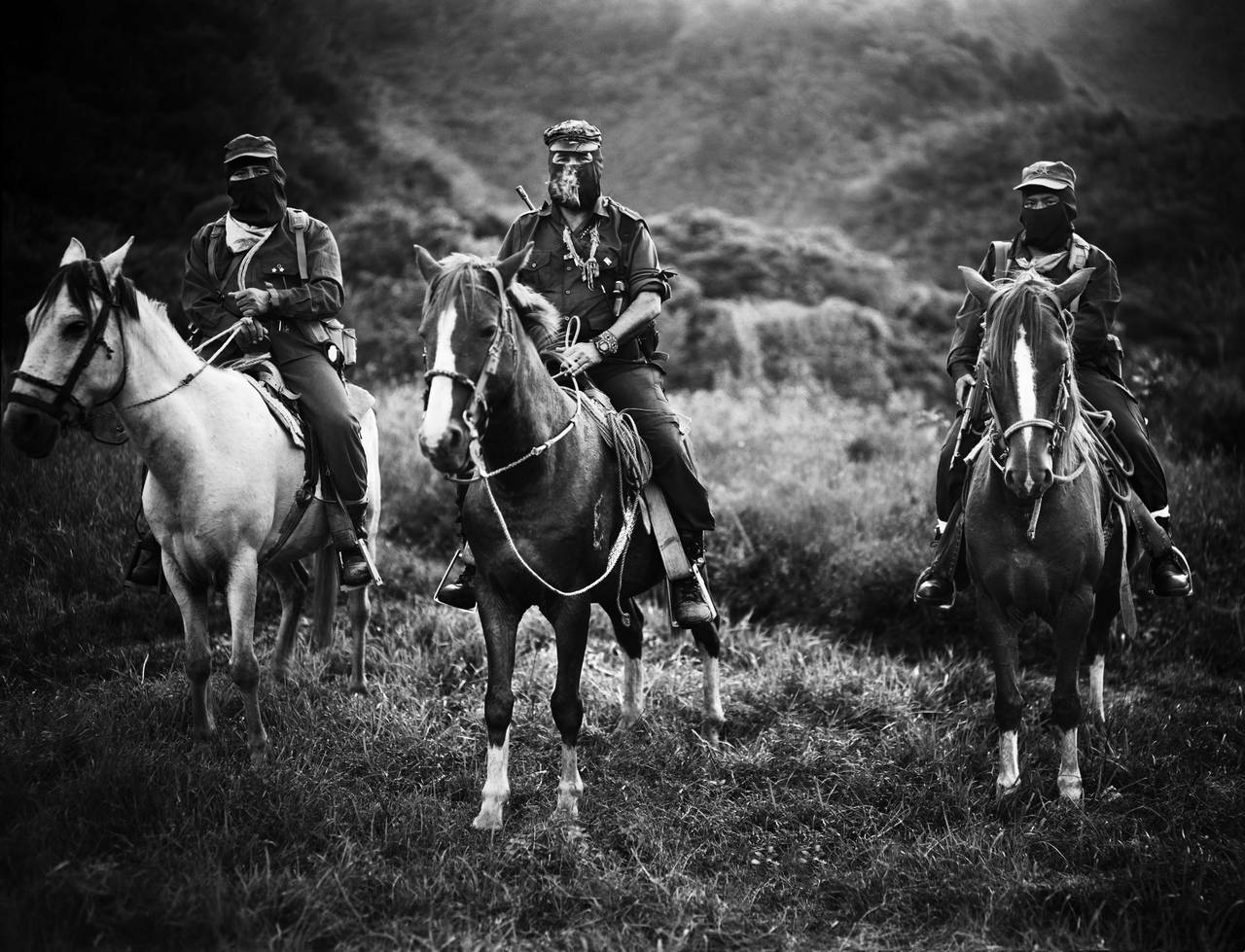
The Best Books on Revolutionary Movements in Latin America
18 November, 2013The concept of revolution is entwined with the history of Latin America to such an extent that the Spanish word ‘guerrilla’ has become part of the global lexicon, applied to insurgents all over the world. The 20th Century was notable for the rise of the guerrilla, the armed civilian seeking to overthrow state or authoritative systems and employing subversive tactics, such as sabotage or ambush, in order to achieve set objectives against often unfavourable odds. These could be technological disadvantages or disparity in numbers, requiring revolutionary movements to look to non-traditional military methods to redress the military imbalances often faced. As such, civilians, women, children and cultural sub-groups have often found a role within such movements that tend not to exist among more conventional armed forces.
Colonial legacy and vast inequality fomented the increase in armed resistance that sprung up across Latin America in the 20th Century. Independence had shown that major change could be implemented through the mobilisation of encompassing, committed movements. The huge gap between the wealthy elite and the impoverished majority brewed the conditions for dissident action. The utter lack of recourse in addressing social inequalities led to the emergence of armed groups committed to deposing of entrenched systems of oppression and abuse under which the masses were obliged to exist in hardship and silence.
This was most notable in the Cuban Revolution from 1953-59 in which an initial band of just a handful of fighters launched a campaign which swelled in numbers as it crossed Cuba to finally oust the US-backed dictatorship of Fulgencio Batista. The movement was led, of course, by Fidel Castro, his brother Raul, Camilo Cienfuegos, and Ernesto ‘Che’ Guevara. The ousting of the hated Batista dictatorship led to the imposition of a socialist state that has existed until today in spite of opposition from its hugely powerful neighbour, the USA. The success of the Cuban Revolution served as a call across the Americas that change was not only desirable but possible, that oppressive systems could be dismantled through popular organisation and resistance.
The subsequent decades saw insurrections spring up across the Americas, as disenfranchised populations sought to achieve set goals against political and economic systems which favoured the few at the expense of the many. Interested in tracking down and learning more about the various revolutionary movements to have occurred in Latin America, we decided to check out some further related reading. Here is a list of ten authoritative and interesting books, available on Amazon, which are featured in no particular order. These are books that we believe will be of interest to S&C readers, and this should not be treated as a definitive list but rather as an overview of some of what’s out there. Feel free to leave your own recommendations or comments regarding our selection.
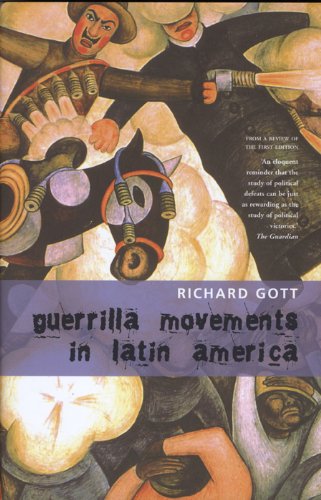
Guerrilla Movements in Latin America by Richard Gott
The leftwing journalist Richard Gott was based in Latin America throughout his career, starting in Cuba in the 50s. During this time, he became acquainted with Fidel and Che, helped to identify the latter’s body following his execution in Bolivia in 1967, and became the leading expert on insurrectionary movements in the region. This 1970 book is a directory of the guerrilla campaigns that had occurred in Latin America. Taking into account that at the time little information came out of the region which wasn’t influenced by global-economic, cold war propaganda, this provides a uniquely composed and exceedingly well-researched overview of the phenomenon of civilian armed resistance. Gott focuses on the five largest insurrections to have occured in the region aside from the Cuban example: the Rebel Armed Forces in Guatemala; the Revolutionary Left Movement in Venezuela; the National Liberation Army in Colombia; the identically-named movement in Peru; and the Ñancahuazú Guerrillas who were under the command of Che when they were routed by the Bolivian military. Gott’s book is all the more compelling for being written at a time when many of these groups were still conducting armed campaigns.
Buy: Amazon
Shining Path: The World’s Deadliest Revolutionary Force by Simon Strong
Sendero Luminoso, or Shining Path, was a Maoist guerrilla movement that emerged in the Ayacucho region of Peru in the late 60s and launched a bloody offensive against the state and the foreign presence in the country. The movement was founded by Abimael Guzmán, imprisoned since 1992, with the expressed goal of establishing a ruling proletariat first in Peru and then internationally. The reality of this saw Peru plunged into civil war, with atrocities committed on all sides which particularly affected rural regions, as peasants faced the unhappy choice of aiding guerrillas and being massacred by the army, or aiding the army and being massacred by the guerrillas. The book rebuts romantic notions of revolutionary struggle as it traces the rise of Shining Path and the government response, in which the brutality meted out by both insurgency and state induces a powerful and disturbing read. For a more literary take on the theme, the Peruvian writer Mario Vargas Llosa’s novel Death in the Andes is set against the ominous backdrop of Sendero.
Buy: Amazon
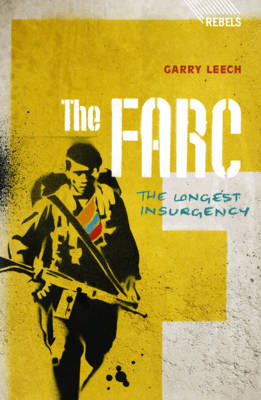
The FARC: The Longest Insurgency by Garry Leech
Few revolutionary groups have polarised opinion as much as the Revolutionary Armed Forces of Colombia, the FARC, whose size and influence has brought them a high degree of media coverage in the modern era. The group’s origins go back to 1964 when Manuel Marulanda Vélez and several members of the Colombian Communist Party formed an armed faction in response to military assaults on rural areas. The subsequent decades have seen the FARC fluctuate in strength but remain engaged in conflict with the state and right-wing paramilitaries. As a self-defined agrarian movement, the group controls large sectors of the countryside, while its goal of establishing peasant authority and rejecting imperialism has attracted left-leaning sympathisers. Critics say, however, that these objectives have given way to a violent campaign of terrorism and drug trafficking which has left successive governments with little choice other than to engage militarily with the organisation. Garry Leech worked as a journalist in Colombia for many years and was actually kidnapped by the FARC at one point. His detailed book details the power structures of the FARC’s presence in Colombia, while he also analyses the contrasting lights in which the group is viewed by those on opposing ideological platforms.
Buy: Amazon
Broadcasting the Civil War in El Salvador: a Memoir of Guerrilla Radio by Carlos Henríquez Consalvi
Communications form a vital component of the revolutionary arsenal, as the need to coordinate and spread information is paramount to conducting operations. In El Salvador’s civil war in the 1980s, Carlos Henríquez Consalvi was the brains behind the radio station that provided a key outlet for the rebel campaign, fulfilling the aforementioned duties and also being used as a means of promoting their cause and recruiting new members to the ranks. The terrible violence that marked the country was the result of a coalition of leftwing armed groups’ resistance to the inherently corrupt and oppressive foreign-backed state apparatus. The author documents the struggle from the side of the rebels, providing a unique perspective on the era.
Buy: Amazon
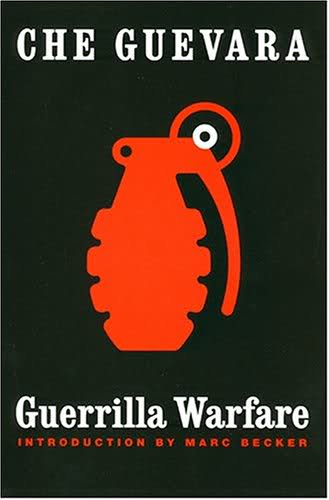
Guerrilla Warfare by Ernesto ‘Che’ Guevara
It would be possible to make a list of books devoted solely to Che Guevara, but as it is we’ve opted for just one (this doesn’t necessarily mean we think it’s the best). As well as being a trained doctor, a great military strategist, and an outstanding public speaker, Che had a way with words, writing numerous books and diaries in which he detailed his experiences and beliefs. Some of these have been very famous, such as The Motorcycle Diaries and The Bolivian Diary, which were made into films. Yet perhaps the book which best encapsulates the essence of Che Guevara is his manual to guerrilla warfare in which he provides a blueprint to adopting such tactics. He highlights key components of the sistema guerrillero, such as general principles and organizing the guerrilla front. It may lack the narrative arc of some of his best-known writings, which brim with observation and personal anecdote, but it provides an unparalleled look (well, there’s also the Brazilian revolutionary Carlos Marighella’s Minimanual of the Urban Guerrilla) into the guerrilla mindset, and has proven highly influential to subsequent movements.
Buy: Amazon
Wars of Latin America 1948-1982: the Rise of the Guerrillas by Rene de la Pedraja
The phenomenon of Latin America insurrection forms the basis of de la Pedraja’s in-depth analysis, in which he examines why, in spite of the number of movements to have arisen in the region, it is only in Cuba and Nicaragua where they managed to achieve their aims of overthrowing oppressive state governance. The author explores the factors that led to success for these movements, and what led to the failure of those in other countries, with particular emphasis on Peru and Colombia. De la Pedraja centres his narrative principally on the importance of the armed struggle, assessing the role of conflict over political considerations, to create an in-depth look at the military factors which determine revolutionary success or otherwise.
Buy: Amazon
The Zapatista Reader by edited by Tom Hayden
Many of the world’s greatest writers are brought together in a collection of essays and articles that examine the rise of the Zapatista rebellion in Southern Mexico in 1994. Gabriel Garcia Marquez, Eduardo Galeano, Octavio Paz and Jose Saramago, among others, contribute to the analysis of the movement, which had a profound impact in Mexico and the wider region, and its charismatic leader, Subcomandante Marcos. On horseback, smoking a pipe, and conspicuously Che-like in his attire, Marcos epitomises the idealistic notion of the revolutionary. The moral right of the movement and the presence of such a figure drew great interest to the peasant struggle, which was born out of regional poverty exacerbated by government policy and police brutality. This book looks at the movement from a variety of angles, and the pedigree of the commentators outlines the beguiling pull of the Zapatistas.
Buy: Amazon
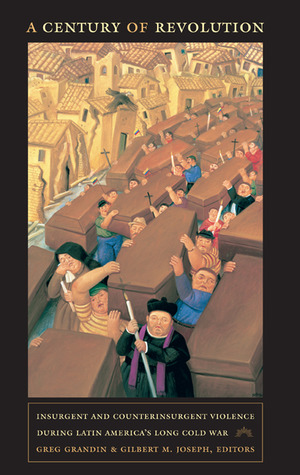
A Century of Revolution: Insurgent and Counterinsurgent Violence During Latin America’s Long Cold War edited by Greg Grandin and Gilbert M. Joseph
The meaty title of this book introduces a detailed look at the numerous movements to have arisen in Latin America in modern times, beginning with the Mexican Revolution of Villa and Zapata in 1910. The book’s scope is underlined in the broadness of its content, taking in the Cuban Revolution, the military dictatorships of the Southern Cone, the 80s civil wars in Central America, and more. Greg Grandin argues that, due to entrenched suppositions over Latin American governing structures, many key questions are overlooked by historians, and the book pertains to address these critical factors. This is an ambitiously-conceived work that serves as a study of Latin America in the 20th Century, seen through the context of the social and military conflicts that have marked the era.
Buy: Amazon
Guerrillas and Generals: The Dirty War in Argentina by Paul H. Lewis
The Dirty War refers to the 1976-83 period in which Argentina was ruled under a highly-repressive military regime characterised by systematic human rights abuses and the murders of thousands of opponents. Guerrilla groups such as the Montoneros and the People’s Revolutionary Army led the campaign against the dictatorship, which brutally eliminated those suspected of involvement with such organisations. Lewis traces the history of the Dirty War and the rise of those that participated on either side of the conflict, and the legacy of the dictatorship.
Buy: Amazon
Salvador Allende: Revolutionary Democrat by Victor Figueroa-Clark
I was in two minds about whether to include this recent publication from Chilean-British academic Victor Figueroa-Clark, a biography of the world’s first elected socialist president who governed Chile from 1970 to 1973, before being deposed in the coup that gave rise to the Pinochet dictatorship. But, as the title alludes to, while Allende may have been a politician first and foremost, he was also a revolutionary, albeit one who pursued the overthrow of a particular system through democratic channels. His radical socialism altered the political landscape of the region and provoked a furious response from the US government of Richard Nixon. Figueroa-Clark’s book outlines how Allende remains relevant, forty years after his death in the coup, as Latin America witnesses a new wave of modern socialism.
Buy: Amazon
Follow Sounds and Colours: Facebook / Twitter / Instagram / Mixcloud / Soundcloud / Bandcamp
Subscribe to the Sounds and Colours Newsletter for regular updates, news and competitions bringing the best of Latin American culture direct to your Inbox.

